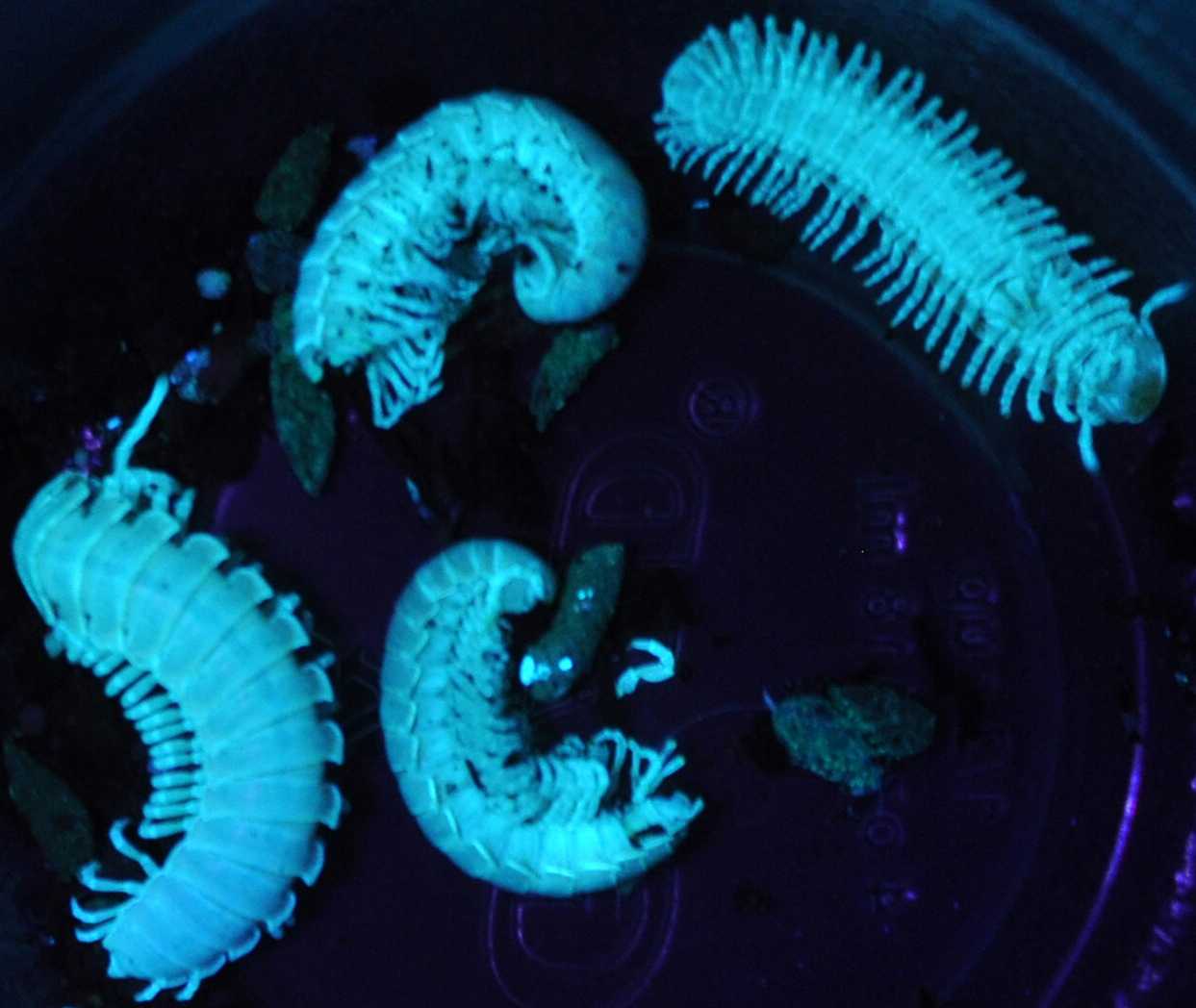The phylum Arthropoda makes up more than 80% of the known animal species on Earth today, so even though there are a lot of pretty butterflies to look at, there are also a lot of creepy crawlies and otherwise scary creatures that many people are afraid of. I’m personally not a fan of centipedes, and their cousins, the millipedes, also creep people out with their plethora of legs. What may concern those who already don’t like them is that scientists have discovered that many species of millipedes glow under UV light, and a few even bioluminesce.

In 2012, National Park Service workers went to the abandoned prison on Alcatraz Island in San Francisco Bay to get rid of the resident rat population, which preys on bird populations that also inhabit the island. The group used food laced with UV-sensitive dye so they could use black lights to find scat trails at night, when the rats are more active. However, the black lights also showed a large population of millipedes that also fluoresced. Research has showed that many species of millipedes glow like this, as do scorpions, but scientists have yet to determine what causes this and why it developed, considering these creatures are nocturnal and aren’t exposed to UV light.
A 2011 experiment sought to explain the other way in which millipedes glow, which is through bioluminescence. Fake millipedes were made out of clay and half were painted with glow-in-the-dark paint to track which millipedes were more likely to get eaten; two times more unpainted millipedes were eaten. From this, researchers determined that the bioluminescence is likely a similar property to the bright colors of a poison dart frog as a warning to predators.
For the most part, these types of millipedes are limited to southern California, so you won’t find any glowing critters up on South Hill. But scientists claim that a late night walk in the Sierra Nevadas will look like the ground is lit up like stars in the sky.






